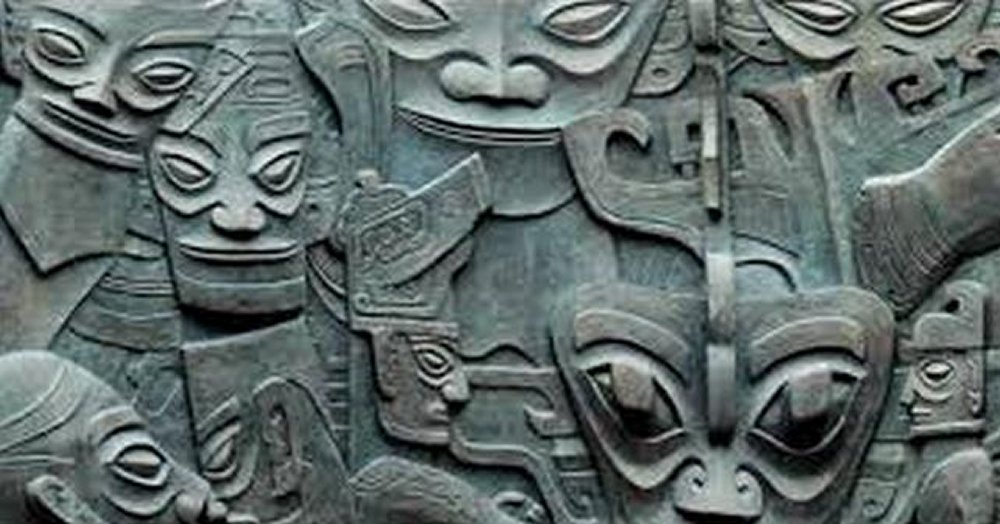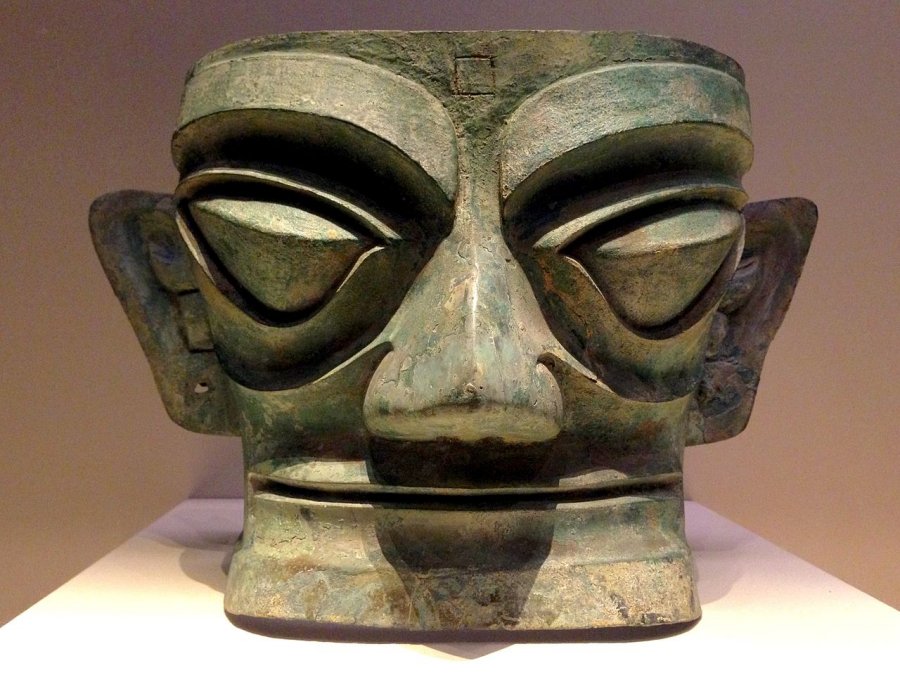Baffling Sanxingdui Civilization: Why Did These People Have Fascination For Eyes?
A. Sutherland - AncientPages.com - Sanxingdui are ruins of an ancient Chinese city with traces of a previously unknown culture dated to Bronze Age. The ruins are located in the region of Guanghan City, Sichuan Province.
This most remarkable place was first discovered in 1929 when a local farmer accidentally stumbled upon about 400 jade pieces, and these were the first Sanxingdui relics, which were discovered at the site. Since this time, the next generations of archaeologists have excavated and studied the Sanxingdui culture.
In 1986, a team of Chinese archaeologists discovered two major sacrificial pits filled with nearly
1000 bronze objects including hundreds of masks and heads, sun-shaped wares, bronze figures, bells, and a great variety of artworks made in jade, gold and stone. Many pieces of art display decorative dragons, snakes and birds, and other most curious relics that no one has ever seen.
However, no texts that could shed light on the secrets of the Sanxingdui culture were found.
Analysis of lead and other elements in the bronzes indicates sources similar to those of other cultures that lived along the lower reaches of the Yangtze River.
Altogether 120 mysterious Sanxingdui artifacts are dated from the 12th to 11th centuries BC. None of them was found marked with characters or and no historical records of the Sanxingdui culture have been found in the annals of nearby areas.
Among the artifacts, particularly intriguing are the heads (or masks), which do not appear to be human or even animal. They have very sharp features, exceptionally protruding eyes, and exaggerated ears and noses.
 Some masks portray the eyeballs sticking out of the mask-like pillars.
Some masks portray the eyeballs sticking out of the mask-like pillars.
Today, it is known that the great legacy of Sanxingdui cannot be entirely associated with the ancient kingdom of Shu, as it was previously thought.
Only a few references regarding the Shu kingdom exist in the early historical records of China until the 4th century BC. The Shu kingdom was subjugated by the state of Qin in 316 BC.
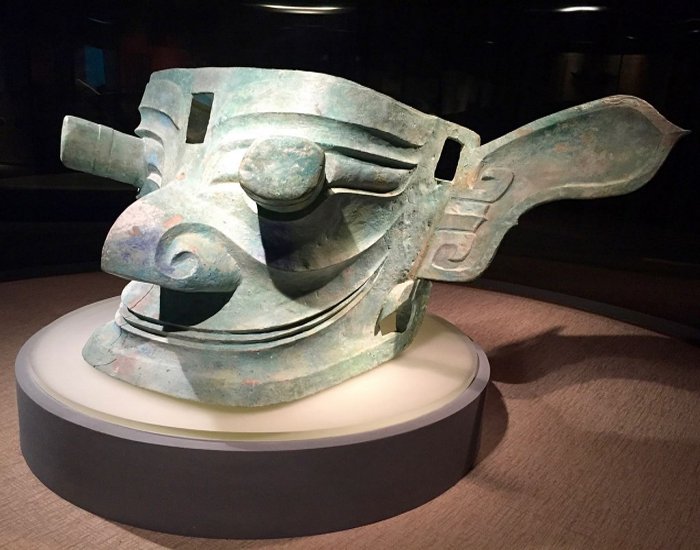
Bronze head (138 cm bred) with protruding eyes believed to be a depiction of Cancong, the semi-legendary first king of Shu. Image credit: Wikipedia
The mysterious Sanxingdui existed in this region much earlier, which was confirmed by recent archaeological excavations. But still, many archaeologists suggested the Sanxingdui culture to be part of the ancient kingdom of Shu.
Who were the people of Sanxingdui civilization? Where did they come from?
See also:
Dazu Rock Statues Of Clairvoyance And Clairaudience
Remarkable 2,000-Year-Old Smoke-Absorbing Lamps Reducing Pollution Discovered
Chang Woo Gow – The Kind And Intelligent Chinese Giant
According to the "Chronicles of Huayang" dated to the Jin Dynasty (265-420), the Shu kingdom was founded by Cancong. Cancong was described as having protruding eyes, a feature that is found in the figures of Sanxingdui. Other eye-shaped objects were also found which might suggest worship of the eyes.
Ancient Chinese myth says that Cancong was the mythical founder of the ancient Shu kingdom and the first ancestor of Shu kings. He taught techniques of silk production. His name means: Can – “silkworm” and cong means: “cluster”.
His appearance was strange, his eyes, for example, bulged in an upright position, which demonstrated his extraordinary powers. He was always seen in green clothes so he was called “Green God” or “God in Green Clothes”.
Written by - A. Sutherland - AncientPages.com Senior Staff Writer
Copyright © AncientPages.com All rights reserved. This material may not be published, broadcast, rewritten or redistributed in whole or part without the express written permission of AncientPages.com
Expand for referencesReferences:
A. P. Underhill, A Companion to Chinese Archaeology
L. Yang, Handbook of Chinese Mythology
Spara
Spara
Spara
Spara
Spara
Spara
Spara
Spara
Spara
Spara
Spara
Spara
Spara
Spara
Spara
Spara
Spara
More From Ancient Pages
-
 Ancient Graves That Date Back To Pre-Vijaya Era Discovered In Sri Lanka
Archaeology | Oct 21, 2015
Ancient Graves That Date Back To Pre-Vijaya Era Discovered In Sri Lanka
Archaeology | Oct 21, 2015 -
 Mystery Of The Lost Underground City Of The Grand Canyon
Featured Stories | Nov 19, 2014
Mystery Of The Lost Underground City Of The Grand Canyon
Featured Stories | Nov 19, 2014 -
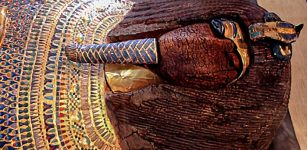 Dispute And Mystery: Strange Case Of The Tomb KV55 In The Valley Of Kings, Egypt
Civilizations | Oct 8, 2015
Dispute And Mystery: Strange Case Of The Tomb KV55 In The Valley Of Kings, Egypt
Civilizations | Oct 8, 2015 -
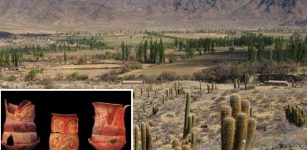 Pre-Inca Societies In The Andes Lacked Hierarchical Leadership And Shared Power Before The Incas Arrived
Archaeology | Dec 13, 2017
Pre-Inca Societies In The Andes Lacked Hierarchical Leadership And Shared Power Before The Incas Arrived
Archaeology | Dec 13, 2017 -
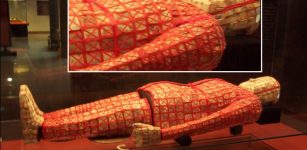 Precious Ancient Chinese Immortality Suits Made Of Jade
Artifacts | Aug 22, 2015
Precious Ancient Chinese Immortality Suits Made Of Jade
Artifacts | Aug 22, 2015 -
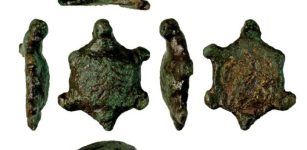 Roman Copper-Alloy Tortoise Figurine Discovered In Suffolk, UK
Archaeology | Dec 4, 2023
Roman Copper-Alloy Tortoise Figurine Discovered In Suffolk, UK
Archaeology | Dec 4, 2023 -
 Ancient Roman Sarcophagus With A Female Skeleton And A Perfume Bottle Discovered In Turkey
Archaeology | Dec 27, 2019
Ancient Roman Sarcophagus With A Female Skeleton And A Perfume Bottle Discovered In Turkey
Archaeology | Dec 27, 2019 -
 Rare 1,000-Year-Old Viking Wooden Bowl Found By Young Boy
Archaeology | Oct 24, 2022
Rare 1,000-Year-Old Viking Wooden Bowl Found By Young Boy
Archaeology | Oct 24, 2022 -
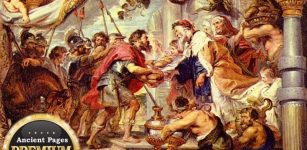 Mysterious Melchizedek: ‘King Of Righteousness’ And Heavenly High Priest In Bible And Dead Sea Scrolls
Biblical Mysteries | Sep 2, 2017
Mysterious Melchizedek: ‘King Of Righteousness’ And Heavenly High Priest In Bible And Dead Sea Scrolls
Biblical Mysteries | Sep 2, 2017 -
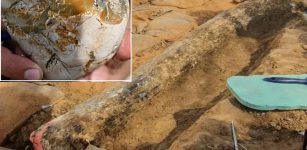 A Half-A Million-Year-Old Well-Preserved Elephant Tusk Unearthed In Israel
Archaeology | Sep 2, 2022
A Half-A Million-Year-Old Well-Preserved Elephant Tusk Unearthed In Israel
Archaeology | Sep 2, 2022 -
 Mystery Of Great Wall Of California: An Ancient Unsolved Enigma
Civilizations | Sep 11, 2018
Mystery Of Great Wall Of California: An Ancient Unsolved Enigma
Civilizations | Sep 11, 2018 -
 Archaeologists Focus On Greek Poet Aratus’ Memorial Tomb And Ruins Of Soli Pompeiopolis
Archaeology | Aug 12, 2020
Archaeologists Focus On Greek Poet Aratus’ Memorial Tomb And Ruins Of Soli Pompeiopolis
Archaeology | Aug 12, 2020 -
 Mysterious Mount Roraima Surrounded By Myths And Clouds Of Dense Fog
Featured Stories | Nov 13, 2018
Mysterious Mount Roraima Surrounded By Myths And Clouds Of Dense Fog
Featured Stories | Nov 13, 2018 -
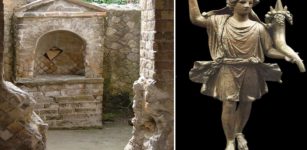 Lares: Roman Household Gods That Protected Home And Family
Ancient Traditions And Customs | Dec 14, 2020
Lares: Roman Household Gods That Protected Home And Family
Ancient Traditions And Customs | Dec 14, 2020 -
 Life Of Galilean Sages Described On 1,800-Year-Old Hebrew Inscriptions Can Confirm Ancient Legends
Archaeology | Feb 25, 2017
Life Of Galilean Sages Described On 1,800-Year-Old Hebrew Inscriptions Can Confirm Ancient Legends
Archaeology | Feb 25, 2017 -
 Ancient Pisidia Antiocheia – Excavations In An Important Center Of Early Christianity
Civilizations | Sep 27, 2015
Ancient Pisidia Antiocheia – Excavations In An Important Center Of Early Christianity
Civilizations | Sep 27, 2015 -
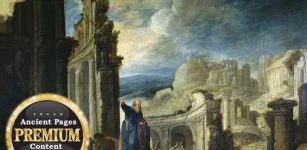 Ezekiel’s Secret Ancient Knowledge About Lost Worlds – Thought-Provoking Theory Examined
Featured Stories | May 3, 2019
Ezekiel’s Secret Ancient Knowledge About Lost Worlds – Thought-Provoking Theory Examined
Featured Stories | May 3, 2019 -
 How Did Vikings Worship Their Gods?
Ancient History Facts | May 25, 2016
How Did Vikings Worship Their Gods?
Ancient History Facts | May 25, 2016 -
 Aboriginal Australians Were World’s First Astronomers Who Discovered Variable Stars – Astrophysicist Says
Archaeology | Jul 16, 2019
Aboriginal Australians Were World’s First Astronomers Who Discovered Variable Stars – Astrophysicist Says
Archaeology | Jul 16, 2019 -
 Zerzura – Lost Ancient Sahara Oasis Guarded By Black Giants
Featured Stories | Jun 10, 2020
Zerzura – Lost Ancient Sahara Oasis Guarded By Black Giants
Featured Stories | Jun 10, 2020

